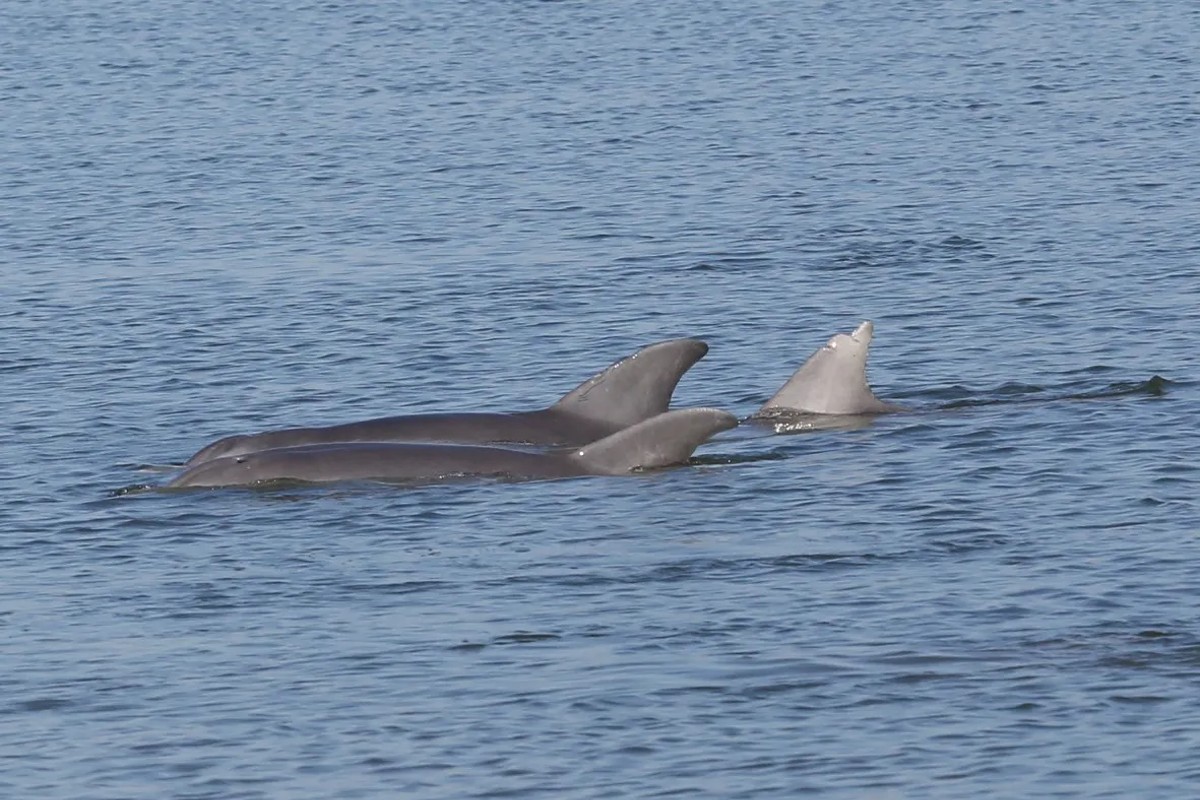
Editor’s Note: We’re offering this story to illustrate the importance for state and federal leaders to keep and bolster environmental protections, such as the federal Marine Mammal Protection Act, which protects dolphins.
By Skyler Baldwin | The Lowcountry’s small population of estuary dolphins, long thought to be common bottlenose dolphins, are actually their own species, according to federal and university researchers.
After a decade of research analyzing DNA samples and morphological data from tissue samples, skulls and vertebral columns, researchers found coastal and estuarine dolphins evolved independently from their offshore counterparts and are more closely related to dolphins in the Gulf of Mexico and Caribbean. Researchers came from the National Oceanic and Atmospheric Administration, National Centers for Coastal Ocean Science and the University of Miami.
Ana Costa, a lecturer of marine biology and ecology at the University of Miami’s Rosenstiel School of Marine, Atmospheric and Earth Science, has been researching these populations of dolphins since 2014.
“We looked at the level of differentiation, and we could easily identify these shallow-water dolphins based on the samples we had,” she said. “It’s such a high level of differentiation, it led us to propose they were entirely different species.”
These dolphins are found along the Atlantic coast from New York to Florida, Costa said. Investigations are still ongoing as to whether they can be found further south in the Caribbean and along the coast of Mexico.
“The new species includes all of our estuary and river dolphins, which locally is about a 300-dolphin population,” said Lauren Rust, executive director of the Lowcountry Marine Mammal Network. “It also includes some coastal dolphins, those traveling just off the coast a few miles from South Carolina to Georgia.”
A total of 147 physically mature skulls and 43 vertebral columns were examined between 1966 and 2011 along the East Coast, according to a peer-reviewed journal written by researchers Costa, Wayne McFee, Lynsey Wilcox, Frederick Archer and Patricia Rosel. The differences they found between coastal dolphins and South Carolinian estuary dolphins were remarkable enough for researchers to suggest a total species divergence.
Researchers chose the new scientific name Tursiops erebennus, which was originally used in 1865 when the first description of a coastal bottlenose dolphin was published. This is distinct from the common bottlenose dolphins scientific name Tursiops truncatus.
Growing importance of conservation
![]() The new designation does not change the existing stock boundaries or protection status of the dolphins under the federal Marine Mammal Protection Act, which was championed in Congress by the late U.S. Sen. Fritz Hollings, D-S.C. Although not considered endangered, they are a strategic stock, meaning any small mortalities can have a large impact on the population.
The new designation does not change the existing stock boundaries or protection status of the dolphins under the federal Marine Mammal Protection Act, which was championed in Congress by the late U.S. Sen. Fritz Hollings, D-S.C. Although not considered endangered, they are a strategic stock, meaning any small mortalities can have a large impact on the population.
“These dolphins are the closest to the frontlines in human threats,” Costa said. “Right now, they are not endangered — there are a good number of these species we have identified. But it faces a lot of human threats. There are small populations of this species that live in restricted waters, like those found in Charleston. They can be highly affected by local threats such as entanglement, water pollution and even noise pollution.”
Rust said the differentiation of the species makes it more important than ever to protect the local dolphin population.
“It’s a big deal,” Rust said. “We have a huge responsibility to understand this and protect these dolphins. Having a local population is already important — we always say how critical they are. But when you make them their own species, it just strengthens that case.”
Rust said a discovery like this is uncommon. With bottlenose dolphins, she explained, there is a lot of population mixing as large groups migrate up and down the coast. But in Charleston’s case, the gene pool was more isolated, and the species developed separately from other bottlenose dolphins off the coast.
“There aren’t a lot of residential populations on the Atlantic Coast in the first place,” she said. “To have animals that stay in the same general area year-round is already pretty unique in itself. We knew they were unique. We knew we needed to protect them. This just adds an extra level to it.”
Skyler Baldwin is a reporter with the Charleston City Paper, where this story first appeared. Have a comment? Send to: feedback@charlestoncitypaper.com



This is interesting. Didn’t know there were so few.
I wish I wasn’t so òld I would love to take a active role in this research. I hold a MS in public health but am 71 years old
Carl Carter
I found this article to be helpful and informative thank you for finding this new breed for us and let’s take care and protect them
Back in the 80s fishing and shrimping in the tidal creeks and rivers in the Charleston area I got to see dolphins stranding fish on banks, snap them up, and slide back into the water.
That was later written about in a publication someplace and I think they said it was something only our dolphins were doing. If this is still true, do they learn and communicate differently from the dolphins offshore?
Tidbits like this that are shared with the general population are fascinating. Keep doing so.